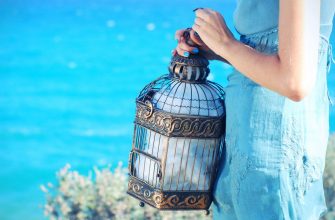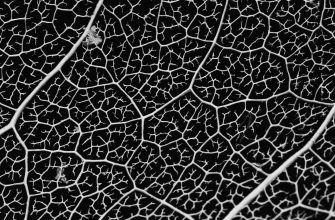Paris
Paris, city (1999 pop. 2,115,757; metropolitan area est. pop. 11,000,000), N central France, capital of the country, on the Seine River. It is the commercial and industrial focus of France and a cultural and intellectual center of international renown. The city possesses an indefinable unity of atmosphere that has fascinated writers, poets, and painters for centuries. Paris is sometimes called the City of Light in tribute to its intellectual preeminence as well as to its beautiful appearance.
Paris is the center of many major newspapers and periodicals, as well as all the major French radio and television stations. Elegant stores and hotels, lavish nightclubs, theaters, and gourmet restaurants help make tourism the biggest industry in Paris. Other leading industries manufacture luxury articles, high-fashion clothing, perfume, and jewelry. Heavy industry, notably automobile manufacture, is located in the suburbs. About one quarter of the French labor force is concentrated in the Paris area.
Transportation Facilities
Situated in the center of the Paris basin, and only 90 mi (145 km) from the English Channel, the city handles a great volume of shipping. Orly and Charles de Gaulle airports (the latter opened in 1974) and many major railroad stations make Paris one of the great transportation centers of western Europe. The Paris metro (subway), built in 1900, was modernized and extended during the 1970s. There are now 16 principal metro lines and a high-speed express subway system servicing the suburbs. The system’s hub, Chatelet Les-Halles, is perhaps the largest, busiest underground station in the world. Paris is also the hub of the national rail system, with high-speed trains connecting it to most major European cities.
Points of Interest
Paris is divided into roughly equal sections by the Seine. On the right (northern) bank are the Bois de Boulogne, Arc de Triomphe, Bibliotheque nationale, Elysee Palace, Grand Palais, Georges Pompidou National Center for Art and Culture, Place de la Concorde, Opera, Comedie Francaise, Louvre, Palais de Chaillot, Maison Europeenne de la Photographie, Grande Arche de la Defense, Champs Elysees, and other great streets, sites, and boulevards. In the eastern part of the right bank is the Museum of the Art and History of Judaism, the Place de la Bastille and the Bastille Opera; to the north is Montmartre, the highest area in Paris, topped by the Church of Sacre. Much of the right bank, which has many of the most fashionable streets and shops, has a stately air. At night many monuments and boulevards are floodlit. In the city’s northeastern outskirts is the Parc de la Villette, home of the large Cite de la Musique, opened in the early 1990s, and the planned site of a number of performance and exhibition spaces.
The left bank, with the Sorbonne, the French Academy, the Pantheon, the Luxembourg Palace and Gardens, the Jardin des Plantes (site of the National Natural History Museum), the Chamber of Deputies, the Quai d’Orsay, and the Hotel des Invalides, is the governmental and to a large extent the intellectual section. The Latin Quarter, for nearly a thousand years the preserve of university students and faculty; the Faubourg Saint-Germain section, at once aristocratic and a haven for students and artists (the celebrated Cafe des Deux Magots and Cafe de Flore are there); and Montparnasse are the most celebrated left-bank districts. The Eiffel Tower stands by the Seine on the Champ-de-Mars.
The historical nucleus of Paris is the Ile de la Cite, a small boat-shaped island largely occupied by the huge Palais de Justice and the Cathedral of Notre-Dame de Paris. It is connected with the smaller Ile Saint-Louis, occupied by elegant houses of the 17th and 18th cent. Characteristic of Paris are the tree-lined quays along the Seine (famed, on the left bank, for their open-air bookstalls), the historic bridges that span the Seine, and the vast tree-lined boulevards that replaced the city walls. Skyscrapers, apartment complexes, and highways have been added to the Paris scene in recent years.
Government and People
Paris is divided into 20 arrondissements (districts or boroughs), each of which has a local council and a mayor, but most of the power is held by the mayor of the City of Paris who is chosen by the city’s council. Paris and its suburbs together make up the eight departments of the Ile-de-France administrative region, which is governed by an elected assembly, chairman, and supervisor and overseen by a prefect appointed by the state.
Immigrants to France now constitute nearly 20% of Paris’s population. The majority of these are Algerian, Moroccan, and Tunisian. Large groups of Indochinese have also immigrated to Paris. About 75% of all Parisians live in the suburbs due to high costs and a high population density in the city. New towns have been built, consolidating suburban areas, and a great deal of manufacturing and other industry takes place in the suburbs.
History
Early History
Julius Caesar conquered Paris in 52 BC It was then a fishing village, called Lutetia Parisiorum (the Parisii were a Gallic tribe), on the Ile de la Cite. Under the Romans the town spread to the left bank and acquired considerable importance under the later emperors. The vast catacombs under Montparnasse and the baths (now in the Cluny Mus.) remain from the Roman period. Legend says that St. Denis, first bishop of Paris, was martyred on Montmartre (hence the name) and that in the 5th cent. St. Genevieve, the patron saint of Paris, preserved the city from destruction by the Huns. On several occasions in its early history Paris was threatened by barbarian and Norman invasions, which at times drove the inhabitants back to the Ile de la Cite.
Clovis I and several other Merovingian kings made Paris their capital; under Charlemagne it became a center of learning. In 987, Hugh Capet, count of Paris, became king of France. The Capetians firmly established Paris as the French capital. The city grew as the power of the French kings increased. In the 11th cent. the city spread to the right bank. During the next two centuries — the reign of Philip Augustus (1180-1223) is especially notable for the growth of Paris — streets were paved and the city walls enlarged; the first Louvre (a fortress) and several churches, including Notre-Dame, were constructed or begun; and the schools on the left bank were organized into the University of Paris. One of them, the Sorbonne, became a fountainhead of theological learning with Albertus Magnus and St. Thomas Aquinas among its scholars. The university community constituted an autonomous borough; another was formed on the right bank by merchants ruled by their own provost. In 1358, under the leadership of the merchant provost Etienne Marcel, Paris first assumed the role of an independent commune and rebelled against the dauphin (later Charles V). During the period of the Hundred Years War the city suffered civil strife, occupation by the English (1419-36), famine, and the Black Death.
During the Renaissance
The Renaissance reached Paris in the 16th cent. during the reign of Francis I (1515-47). At this time the Louvre was transformed from a fortress to a Renaissance palace. In the Wars of Religion (1562-98), Parisian Catholics, who were in the great majority, took part in the massacre of St. Bartholomew’s Day (1572), forced Henry III to leave the city on the Day of Barricades (1588), and accepted Henry IV only after his conversion (1593) to Catholicism. Cardinal Richelieu, Louis XIII’s minister, established the French Academy and built the Palais Royal and the Luxembourg Palace. During the Fronde, Paris once again defied the royal authority. Louis XIV, distrustful of the Parisians, transferred (1682) his court to Versailles. Parisian industries profited from the lavishness of Versailles; the specialization in luxury goods dates from that time. J. H. Mansart under Louis XIV and Francois Mansart, J. G. Soufflot, and J. A. Gabriel under Louis XV created some of the most majestic prospects of modern Paris.
The Seventeenth and Eighteenth Centuries
During the late 17th and the 18th cent. Paris acquired further glory as the scene of many of France’s greatest cultural achievements: the plays of Moliere, Racine, and Corneille; the music of Lully, Rameau, and Gluck; the paintings of Watteau, Fragonard, and Boucher; and the salons where many of the philosophes of the Enlightenment gathered. At the same time, growing industries had resulted in the creation of new classes — the bourgeoisie and proletariat — concentrated in such suburbs (faubourgs) as Saint-Antoine and Saint-Denis; in the opening events of the French Revolution, city mobs stormed the Bastille (July, 1789) and hauled the royal family from Versailles to Paris (Oct., 1789). Throughout the turbulent period of the Revolution the city played a central role.
Napoleon to the Commune
Culturally, the city was at various times the home or host of most of the great European figures of the age. Balzac, Hugo, Chopin, Berlioz, Liszt, Wagner, Delacroix, Ingres, and Daumier were a few of the outstanding personalities. The grand outline of modern Paris was the work of Baron Georges Haussmann, who was appointed prefect by Napoleon III. The great avenues, boulevards, and parks are his work. During the Franco-Prussian War (1870-71), Paris was besieged for four months by the Germans and then surrendered. After the Germans withdrew, Parisian workers rebelled against the French government and established the Commune of Paris, which was bloodily suppressed.
Under the Third Republic
With the establishment of the Third French Republic and relative stability, Paris became the great industrial and transportation center as it is today. Two epochal events in modern cultural history that took place in Paris were the first exhibition of impressionist painting (1874) and the premiere of Stravinsky’s Sacre du Printemps (1913). In World War I the Germans failed to reach Paris. After 1919 the outermost city fortifications were replaced by housing developments, including the Cite Universitaire, which houses thousands of students. During the 1920s, Paris was home to many disillusioned artists and writers from the United States and elsewhere. German troops occupied Paris during World War II from June 14, 1940, to Aug. 25, 1944. The city was not seriously damaged by the war.
Contemporary Paris
Paris was the headquarters of NATO from 1950 to 1967; it is the headquarters of UNESCO. A program of cleaning the city’s major buildings and monuments was completed in the 1960s. The city was the scene in May, 1968, of serious disorders, beginning with a student strike, that nearly toppled the Fifth Republic. In 1971, Les Halles, Paris’s famous central market, called by Zola the «belly» of Paris, was dismantled. Construction began immediately on Chatelet Les-Halles, Paris’s new metro hub, which was completed in 1977. The Forum des Halles, a partially underground, multistory commercial and shopping center, opened in 1979. Other developments include the Georges Pompidou National Center for Art and Culture, built in 1977, which includes the National Museum of Modern Art. The Louvre underwent extensive renovation, and EuroDisney, a multibillion dollar theme and amusement park, opened in the Parisian suburbs in 1992. A number of major projects in the city were initiated by President Francois Mitterrand (1981-95); they include the new Bibliotheque Nationale, the glass pyramid at the Louvre, Grande Arche de la Defense, Arab Institute, Bastille Opera, and Cite de la Musique.
Топик «Visiting Paris»
Paris is one of the cities that everyone wants to visit. There are some people who dream of Paris romatic atmosphere, others who expect something exclusive and exquisite and, finally, there are always those who can’t wait to see Disneyland Park.
The truth is Paris is not the place you seem to know. It is not all about luxurious restaurants with perfect dishes, magnific buildings and churches, well-dressed citizens and endless romanticism. Paris is much more varied.
Paris is full of different flavours and noises that attract and brush you off at the same time. Montmartre is one of the most famous districts in the city. It is a place where you can walk along food courts, small shops, tiny galleries, bizarre artists and their unique pictures. Monmartre is full of life and noises. In addition, it is a hill at the top of which a huge and beautiful Basilica of the Sacred Heart of Paris is situated.
However, if you want to see that Paris that you have always imagined, you should go to the Seine river and explore the districts situated by its sides. They introduce you the exuberant architecture and the excellence of regular parks. You can visit famous Louvre Museum and amazing Musée d’Orsay, admire the stunning beauty of numerous churches and cathedrals like Notre-Dame de Paris and Sainte-Chapelle.
One way or another, Paris is worth visiting. The city can amaze you and make a mash on you forever.
Перевод:
Париж – один из тех городов, которые каждый хочет посетить. Есть люди, мечтающие о романтической атмосфере Парижа, есть те, что ожидают чего- то особенного и изысканного и, наконец, всегда есть люди, которым не терпится увидеть парк Диснейленд.
На самом деле, Париж не тот, каким кажется. Он не состоит лишь из роскошных ресторанов с идеальными блюдами, помпезных зданий и церквей, хорошо одетых горожан и бесконечной романтики. Париж куда более разнообразен.
Париж полон различных запахов и звуков, которые притягивают и одновременно отталкивают. Монмартр – один из самых известных районов города. Это место, где можно прогуливаться вдоль кафе с уличной едой, маленьких магазинов, крошечных картинных галерей, странноватых художников и их уникальных картин. Монмартр полон шума и жизни. Более того, он представляет собой холм, на вершине которого располагается огромная и прекрасная базилика Сакре-Кёр.
Однако, если вы желаете увидеть тот Париж, который вы всегда себе представляли, вам следует отправиться к реке Сене и исследовать районы, располагающиеся по ее берегам. Они представят вам пышный архитектурный стиль и превосходство регулярных парков. Вы сможете посетить известный Лувр и удивительный музей Орсе, восхититься необыкновенной красотой многочисленных церквей и сборов, таких как: Собор Парижской Богоматери и Сен-Шапель.
Так или иначе, Париж стоит посетить. Город сможет удивить вас и покорить ваше сердце навеки.
Фразы и слова:
Magnific – помпезный, восторженный
well-dressed – хорошо одетый, элегантный
to brush off – отталкивать от себя
bizarre – странный, экстравагантный
exuberant architecture – пышный архитектурный стиль
regular park – регулярный парк
to make a mash on smb – покорить чье-либо сердце
What to do in Paris?
If we had to select ten places, here are the ones we would recommend you to visit in Paris. Go ahead and fall in love!
1 Eiffel Tower
What would Paris be without its symbolic Eiffel Tower? Built by Gustave Eiffel to commemorate the centenary of the French Revolution, it is presented at the Exposition Universelle in Paris in 1889. 324 meters high, it is one of the most visited monuments in the world with nearly 7 million visitors a year.
The first floor houses the Eiffel Tower 58 which extends over two levels, 58 meters above the ground as its name suggests. On the second floor, the view is the best at 115 meters because you have a diving view on the ground below. Finally on the 3rd floor at 275 meters, you can see what the office of Gustave Eiffel was. For the more adventurous one, it is possible to use the stairs and climb the steps (1,665 to the summit).
The ascent of the Eiffel Tower is a must to enjoy the magnificent view of Paris.
2 Notre Dame Cathedral
One of the most enduring symbols of Paris: Notre-Dame de Paris, also known as Notre Dame, a Roman Catholic cathedral is located on the eastern half of the Ile de la Cité. It is widely considered one of the finest examples of French Gothic architecture in France and Europe. Begun in 1163 and completed in 1345, this cathedral is a sight with its portals surrounded by his many sculptures and gargoyles that adorn the roof.
We advise you to walk around the cathedral, then go inside and climb the 387 steps to the top of the towers. The climb to the top of the towers can be exhausting, but you will get a panoramic view of the region and see the famous gargoyles up close.
3 Louvre Museum
The Louvre is the most visited art museum in the world. Located in the heart of Paris, this historic building is a former royal palace, with an area of 210,000 square meters including 60,600 for the exhibitions. The museum is housed in the Louvre, originally a fortress built in the late 12th century under Philip II. The remains of the fortress are visible in the basement of the museum.
The collection is divided into eight departments:
4 Champs Elysées / Arc of Triumph
Under the spell of ancient Roman architecture, Napoleon commissioned Jean Chalgrin the design of a triumphal arch dedicated to the glory of imperial armies. Built in the 19th century, it is the largest monument of its kind in the world. Impressive sculptures adorn its pillars. In addition, the names of 558 generals and the great victories are engraved on the top of the arc. Under the Arc de Triomphe is the Tomb of the Unknown Soldier of France.
The panoramic terrace above the door offers a beautiful view of Paris. 50 meters high, 45 meters wide and 22 meters deep, the Arc de Triomphe is located on the Place de l’Etoile which leads to the Champs Elysees which is nicknamed «the most beautiful avenue in the world.» It stands on 1.9 km between Place de la Concorde and the Arc de Triomphe. There are many luxury boutiques (Louis Vuitton, Cartier, Guerlain, Montblanc …), places of ehntertainment (Lido, cinemas), famous cafes and restaurants (Fouquet’s).
5 Cruise on the Seine
Find the best way to visit the «City of Light» enjoying a cruise on the Seine, especially at night. When the sun sets, the monuments are lit slowly. You get a panoramic view to the forefront so you can enjoy the beauty of Paris: Eiffel Tower, Notre Dame, Pont Alexandre III and many more.
You can also enjoy a dinner cruise on the Seine aboard a boat. For about two hours, you are welcomed.
6 Montmartre
Montmartre is a hill located in the north of Paris, 130 meters high, having its name to the surrounding neighborhood. It is best known for the white-domed Basilica of the Sacred Heart, at the top. It was completed in 1919 and honors the French victims of the Franco-Prussian war of 1870.
If you’re in the area, do visit the Square of Tertre, few blocks from the Basilica. There are many artists setting up their easels to paint tourists or exhibit their work. Place du Tertre is a reminder of the time when Montmartre was the hub of modern art in the early 20th century; many artists such as Amedeo Modigliani, Claude Monet, Pablo Picasso and Vincent van Gogh worked there. The Espace Salvador Dalí, a museum dedicated primarily to sculpture and drawings of the Spanish painter, can be found a few steps from the Square of Tertre.
The famous cabaret Moulin Rouge is located in Montmartre.
7 Palace of Versailles
The Château de Versailles is the most famous castle in France. Built in the 17th century as a symbol of military power of France and as a demonstration of French supremacy in Europe, Versailles was the seat of political power in the Kingdom of France from 1682 to 1789. This huge complex of buildings, gardens and terraces is definitely a must for any visitor who will be captivated by exceptional accommodations, lavish decorations, furniture and gilded works of Renaissance art.
Visit Versailles: you will start by the State Apartments and the famous Hall of Mirrors, the Queen’s chamber. Do not forget to stroll through the famous «French» gardens.
The Latin Quarter of Paris is located on the left bank of the Seine, around the Sorbonne. Known for its student life, lively atmosphere and bistros, the Latin Quarter is the home to many higher education institutions, such as the Ecole Normale Superieure, the Ecole des Mines de Paris or the Ecole Polytechnique. The area takes its name from the Latin language, which was once widespread in and around the University since Latin was the international language of learning in the Middle Ages.
The Luxembourg park is a private garden open to the public created in 1612 at the request of Marie de Medicis to accompany the Luxembourg Palace. The Parisians affectionately call it the «Luco». The garden surrounds the Palais du Luxembourg, where the Senate seats. Redesigned by André Le Nôtre, it is very pleasant to walk around; you will also find an orchard, several varieties of apples, an apiary and a greenhouse with orchid collection. There are 106 statues, a bronze reduction of the Statue of Liberty and 3 beautiful fountains.
9 Moulin Rouge
The Moulin Rouge is a cabaret known as the spiritual birthplace of the famous French Cancan. Located at the foot of Montmartre hill in the heart of Pigalle, it was built in 1889 by Joseph Oller and Charles Zidler. Initially introduced as a courtship dance, the cancan made possible the birth of the cabaret, now present in many countries around the world. Today, the Moulin Rouge is a tourist attraction, providing entertainment for visitors from around the world.
Its style and its name have been imitated and borrowed from other nightclubs around the world, Las Vegas, for example. In addition, many films have helped the reputation of the cabaret, such as Baz Luhrmann’s movie in 2001, starring Nicole Kidman and Ewan McGregor.
Book the Moulin Rouge tickets in advance, it sells out extremely quickly.
10 Disneyland Paris
Fans of Mickey can visit Disneyland Paris which is located 32 km from central Paris, with a connection to the suburban RER A.
Disneyland Paris has two theme parks: Disneyland (with Sleeping Beauty’s castle) and Walt Disney Studios. Top attractions are Space Mountain, It’s a Small World and Big Thunder Mountain.
Paris — топик на английском о столице Франции
What do you know about Paris? You have definitely heard about the Eiffel Tower, Louvre and the Disney Land. Probably you have heard something about the romantic atmosphere of the city, exquisite cuisine, croissant, and baguette. However, Paris is much more than that and there are things which no one has told you. But we will.
French people do speak English
It is thought that French people do not like the English language and pretend not to speak it when tourists ask them for help. This is only partially true. With the Internet and globalization, French now have to learn English. Most of them understand and speak it but yes, they prefer their mother tongue. So, if you need any help, you’d better try to ask for it in French first.
Quality food
Parisians care a lot about what they eat. The quality of food is the main priority of every meal they have every day. They do not serve big or small portions, they just know the right size. Maybe that is the reason why French people are supposed to be slim. In addition, food is not only satisfaction but is also meaningful for your social life. Socializing during a meal is very important and a good company together with delicious food is a perfect duet for Parisians.
Free art
Paris is famous for its museums and art galleries of both classical and modern art. However, you can stand out from the crowd and not go to Louvre and save some money. There is a lot of street art like graffiti which you can see for no money. Moreover, there is a Montmartre district with many little art galleries and works by pavement artists.
Перевод:
Что вы знаете о Париже? Вы определенно слышали об Эйфелевой Башне, Лувре и Дисней Лэнде. Возможно, вы что-то слышали о романтической атмосфере города, изысканной кухне, круассанах и багетах. Тем не менее, Париж – гораздо больше, чем все это вместе взятое, и есть вещи, о которых вам никто никогда не говорил. Но мы скажем.
Французы говорят по-английски
Считается, что французы не любят английский язык и делают вид, что не понимают туристов, просящих о помощи. Это лишь от части правда. С интернетом и глобализацией французам пришлось выучить английский. Большинство из них понимает его и может говорить, но да, предпочитают они все свой родной язык. Поэтому, если вам нужна какая-либо помощь, лучше вам попытаться попросить о ней сначала на французском.
Качественная еда
Парижане сильно заботятся о том, что они едят. Качество еды – главный приоритет при выборе каждого блюда. Они не подают большие или маленькие порции, а знают верный размер. Возможно, в этом и есть причина, по которой французы считаются стройными. Более того, еда не просто удовольствие, а важная часть жизни в обществе. Общение во время еды очень важно, а хорошая компания вкупе со вкусной едой – идеальный дуэт для парижан.
Бесплатное искусство
Париж известен своими музеями и картинными галереями как классического, так и современного искусства. Однако вы можете выделиться из толпы и не пойти в Лувр, сохранив деньги. Есть много уличного искусства, как граффити, которое вы можете увидеть совершенно бесплатно. Более того, в районе Монмартр есть множество маленьких галерей и работ уличных художников.
У меня есть еще один интересный топик о столице Франции — с ним можно ознакомиться здесь
Полезные выражения по теме:
Exquisite cuisine – изысканная кухня
Pretend to – притворяться, делать вид
Mother tongue – родной язык
Socialize – общаться, быть в людях
Stand out from the crowd – выделяться из толпы
Pavement artist – уличный художник





















